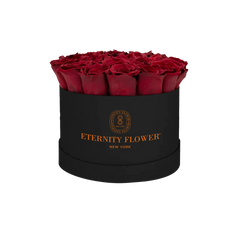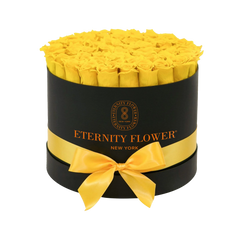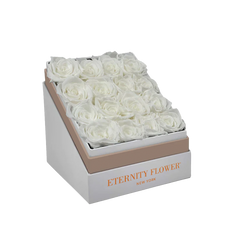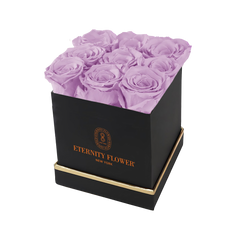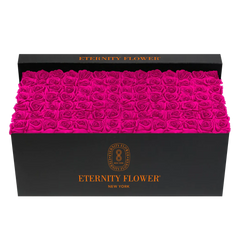Autumn, with its fiery foliage and crisp air, signals a shift in the natural world. As summer's vibrant blooms make way for the rich tapestry of fall, gardens too undergo a transformation. The transition isn't just about swapping one set of flowers for another; it's about understanding and immersing oneself in the deeper essence of the season.
While summer gardens burst forth with unbridled enthusiasm, autumn gardens have a mellow richness, a maturity that speaks of the cycles of nature. Crafting a garden during this season is like painting with nature, using a palette of warm hues, rich textures, and innovative design elements.
It's about capturing the ephemeral beauty of fall and making it linger a little longer in our backyards. With this backdrop, let's delve deep into some fresh design ideas and evolving trends that can inspire a compelling autumnal flower garden.
Layered Landscapes

The beauty of a layered garden is its ability to create a visual journey, drawing the eye from the foreground to the background with ease. Begin with tall, statuesque plants, such as ornamental grasses and sunflowers, setting the scene. Then, descend towards the middle layer, filled with vibrant dahlias, torch-bearing kniphofias, or the golden hues of black-eyed Susans. Conclude with the ground cover, featuring plants like pansies, creating a carpet of diverse colors and shapes.
Embracing a layered approach not only crafts a dynamic visual story but ensures each plant species gets its deserving spotlight. By paying attention to heights and plant growth patterns, gardeners can orchestrate a play of shadows and highlights, making the garden look larger and more intricate than its actual dimensions.
Read More: Types of Orchids: Exploring Unique Varieties and Species
Warm Color Palettes

As trees don leaves of amber and ruby, gardens too should resonate with these warm shades. Plants like marigolds, chrysanthemums, and rudbeckias become the heroes of the season, offering blooms that echo the surrounding fall foliage. Their rich and warm tones set the garden ablaze with an autumnal glow, creating a welcoming ambiance.
Yet, amidst this warmth, a touch of contrast goes a long way. Integrating deep purples, burgundies, and even hints of blue can offer relief and depth. Flowers like asters or blue salvias can play this role, ensuring that the garden doesn't become monochromatic but is instead a harmonious blend of autumn's best colors.
Read More: Flowers for Anniversary: Celebrate Love with Beautiful Blooms
Incorporating Texture

An engaging garden is not just about color but also the tactile experiences it offers. Autumn gardens can benefit from a medley of textures. Plants like celosia with their soft, velvety touch or echinacea with their spiky central cones, introduce a hands-on allure.
Moreover, the fall season brings forth seed pods, berries, and unique foliage that can further enrich the garden's textural palette. Consider integrating plants like the lantern-carrying physalis or the intriguing seed heads of nigella. Their presence ensures that the garden remains vibrant, even as petals start to drop, preparing for winter.
Read More: Flowers for Condolences: Expressing Sympathy and Support
Focal Points and Features

Gardens, much like any artistic composition, require a focal point—a centerpiece that anchors the entire design. This could be a beautiful water feature, a vintage birdbath, or even an ornate garden sculpture. These elements guide the visitor's gaze, offering a structured view amidst nature's wild beauty.
Complementing these focal features with strategic planting is key. For instance, placing bright dahlias or radiant asters around a stone bench can draw attention to it. Similarly, tall grasses dancing around a water feature can accentuate its presence, making it a true highlight of the autumn garden.
Read More: Yellow Flowers Meaning: Interpreting Flower Colors
Natural Borders and Pathways

The allure of a garden often lies in its mysteries, the little nooks and corners that beckon visitors to explore. Carving out pathways and borders naturally guides this exploration. Plants with a sideways growth, like creeping Jenny, or those with cascading tendencies, such as some aster varieties, can be perfect choices to line these paths.
Interspersing taller plants intermittently gives a sense of rhythm to these pathways. As one walks, the varying heights of plants create a gentle, rhythmic motion, almost like a dance to autumn's serene tune. Add to this the rustle of fallen leaves underfoot, and you have a pathway that's nothing short of magical.
Read More: Flower That Represents Love: A Symbolic Journey of Blossoms
Conclusion

Embracing the nuances of the autumn season in a garden requires a delicate balance of design knowledge, botanical understanding, and artistic flair. It's more than just planting; it's about storytelling.
Every choice made, from the meandering pathways to the focal features, contributes to a narrative—a tale that paints a picture of the golden interlude between the vibrancy of summer and the serenity of winter. It celebrates the fleeting moments of nature, those short-lived days when every leaf becomes a flower and every flower tells a story.
So, as the days grow cooler and the nights draw in, let your garden be a testament to autumn's resplendent beauty, a space where each bloom, leaf, and seed pod comes together in a symphony of seasonal splendor.
Shop for your perfect gifts at Eternity Flower






